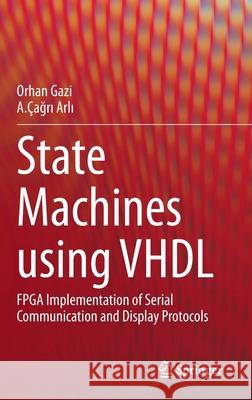State Machines Using VHDL: FPGA Implementation of Serial Communication and Display Protocols » książka
topmenu
State Machines Using VHDL: FPGA Implementation of Serial Communication and Display Protocols
ISBN-13: 9783030616977 / Angielski / Twarda / 2021 / 313 str.
State Machines Using VHDL: FPGA Implementation of Serial Communication and Display Protocols
ISBN-13: 9783030616977 / Angielski / Twarda / 2021 / 313 str.
cena 342,95 zł
(netto: 326,62 VAT: 5%)
Najniższa cena z 30 dni: 327,68 zł
(netto: 326,62 VAT: 5%)
Najniższa cena z 30 dni: 327,68 zł
Termin realizacji zamówienia:
ok. 22 dni roboczych
Bez gwarancji dostawy przed świętami
ok. 22 dni roboczych
Bez gwarancji dostawy przed świętami
Darmowa dostawa!
Kategorie:
Kategorie BISAC:
Wydawca:
Springer
Język:
Angielski
ISBN-13:
9783030616977
Rok wydania:
2021
Wydanie:
2021
Ilość stron:
313
Waga:
0.63 kg
Wymiary:
23.39 x 15.6 x 1.91
Oprawa:
Twarda
Wolumenów:
01
Dodatkowe informacje:
Wydanie ilustrowane











